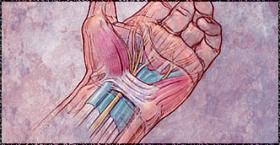
Common Sport Related Hand & Wrist Injuries
The hand and wrist are commonly involved in sport-related injuries. The knowledge of the most common injury patterns, sport-specific presentation/treatment, and familiarity with the guidelines for return to play are critical to practitioners who see patients with sports-related hand and wrist injuries.
This presentation was originally recorded at the 12th Annual Current Concepts in Primary Care Sports Medicine, March 5-7, 2015 Chicago, IL.
Target Audience
This activity has been designed for primary care physicians, nurses, nurse practitioners, therapists, and other healthcare professionals interested in common sports-related hand and wrist injuries.
Learning Objectives
At the end of the session, participants will:
- Describe the most common sports-specific injury of the hand and wrist;
- Identify the indications for non-operative and operative treatment of sports related hand and wrist injuries;
- Discuss the general guidelines for return to play in athletes with common sports related hand and wrist injuries.
 Jovito Angeles, MD
Jovito Angeles, MD
Jovito Angeles, MD, is an expert in the surgical treatment of adults and children with orthopaedic conditions, particularly those with musculoskeletal problems of the upper extremities.
Dr. Angeles cares for patients with:
Traumatic injuries, such as fractures, dislocations and amputations
Degenerative conditions, such as arthritis and rotator cuff tears
Congenital anomalies, such as webbed/fused fingers and clubbed hands
He is also interested in the treatment of patients with traumatic and birth-related brachial plexus palsies, traumatic nerve injuries and compressive neuropathies.
Dr. Angeles is currently conducting research on nerve repair and regeneration. By combining new materials, such as stem cells and biological scaffolds, with available biological grafting sources, he hopes to improve functional outcomes after nerve repair and reconstruction.
The University of Chicago Pritzker School of Medicine is accredited by the Accreditation Council for Continuing Medical Education to provide continuing medical education for physicians.
Credit Designation
The University of Chicago Pritzker School of Medicine designates this enduring material for a maximum 1 AMA PRA Category 1 Credit(s)™. Physicians should claim only the credit commensurate with the extent of their participation in the activity.
Nurses and other healthcare professionals will receive a Certificate of Participation. For information on the applicability and acceptance of certificates of participation for educational activities certified for AMA PRA Category 1 Credit™ from organizations accredited by the ACCME, please consult your professional licensing board.
To view this activity, you will need to visit the Learning @ the Forefront website at:

 Facebook
Facebook X
X LinkedIn
LinkedIn Forward
Forward